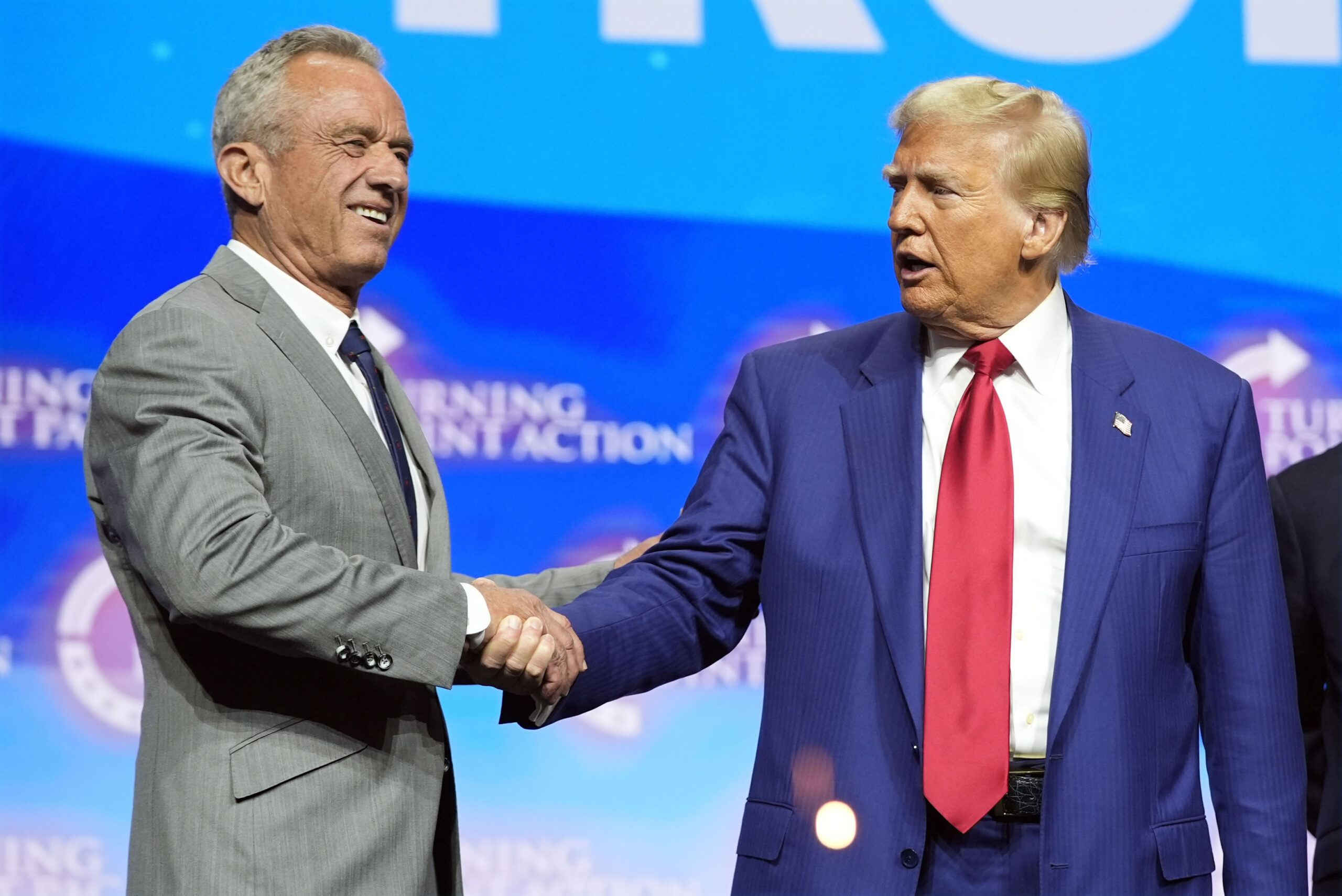In recent years, Trump’s health policies have sparked significant debate among healthcare professionals, highlighting crucial health policy differences compared to previous administrations. This guide examines the unique aspects of Trump Administration healthcare, focusing on the implications of Medicaid cuts, Medicare reforms, and adjustments to the Affordable Care Act. By analyzing the Obamacare changes, such as revisions to health insurance policies and drug pricing reform, healthcare providers can better understand how these shifts affect patient care and accessibility. Furthermore, this post will delve into the management of the opioid crisis, the COVID-19 response, and the evolution of mental health policies during Trump’s tenure. Ultimately, grasping the nuances of these policies is essential for healthcare professionals aiming to navigate the evolving landscape of US health reforms effectively.
Overview of Trump’s Health Policies
The healthcare landscape in the United States underwent considerable transformation under the Trump administration. Understanding Trump health policies provides insights into the administration’s approach to US health reforms and its implications for healthcare professionals. Here are the key elements:
Affordable Care Act Adjustments: Although the Affordable Care Act (ACA) laid the groundwork for many benefits, the Trump administration aimed to roll back significant provisions of the law, resulting in notable Obamacare changes.
Medicaid Cuts: Policy shifts included aggressive Medicaid cuts, which altered access for millions of low-income individuals and sparked debates on the future of state Medicaid programs.
Medicare Reforms: The administration pushed forward with Medicare reforms, focusing on limiting costs and increasing privatization of certain services, presenting both challenges and solutions for healthcare provisioning.
Public Health Strategy: A departure from past practices, public health strategy under Trump emphasized deregulation, aiming for reduced barriers to healthcare access (healthcare deregulation), yet raising concerns over quality.
Drug Pricing Reform: The commitment to drug pricing reform signaled an intent to address escalating medication costs, which initiatives aimed specifically at transparency in pricing.
Crisis Management Approaches: The administration’s opioid crisis management and the COVID-19 response brought acute attention to how healthcare systems must adapt in times of public health emergencies, reshaping protocols and funding priorities.
Mental Health Policies: Moreover, mental health policies were updated to ensure better integration within primary care, signaling a shift towards more holistic approaches that consider psychological dimensions as crucial to overall health.
In summary, Trump health policies represented a pivotal chapter in healthcare access and regulation, aiming both for innovation and cost control, with discernible effects on various healthcare sectors. Recognizing these changes equips healthcare professionals to navigate the evolving landscape effectively.
Comparison with Previous Administrations
The Trump Administration healthcare policies marked a significant departure from those of previous administrations, particularly regarding US health reforms. The core differences can be summarized as follows:
| Policy Area | Trump Administration | Previous Administrations |
|---|---|---|
| Affordable Care Act | Sought to roll back components of the ACA | Attempted to expand coverage and access |
| Medicaid Cuts | Implemented cuts; promoted state-level block grants | Expanded Medicaid under ACA for low-income |
| Medicare Reforms | Focused on reducing costs and increasing flexibility | Aimed at expanding coverage and benefits |
| Healthcare Deregulation | Encouraged deregulation and competition | Enforced stricter regulations for insurance |
| Drug Pricing Reform | Pursued initiatives to lower drug prices | Targeted through negotiations for Medicare |
| COVID-19 Response | Fast-tracked vaccine development via Operation Warp Speed | Emphasized prevention and preparedness |
These differences illustrate a distinct shift in direction. For instance, while Obamacare changes aimed to extend coverage, the Trump health policies often focused on dismantling these frameworks. By prioritizing healthcare access through Health Savings Accounts and emphasizing deregulation, the Trump Administration aimed to provide alternatives that some believe fostered more freedom in choosing health plans.
Moreover, the comparison extends to specific areas like preventive care funding and the pre-existing conditions policy. Decisions made during the Trump Administration often put forth strategies that differed markedly from the previous approach, presenting healthcare professionals with unique challenges and considerations when navigating these changes.
In summary, understanding these nuances in health policy differences is crucial for healthcare professionals. It allows for informed discussions about implications for patient care and the future landscape of healthcare in the United States.
Impact of the Affordable Care Act
The Affordable Care Act (ACA) significantly reshaped the landscape of healthcare in the United States, influencing policies under the Trump administration. Trump’s approach to healthcare involved a mixture of attempts to repeal and modify aspects of the ACA, along with introducing new directives that affected various components of the healthcare system.
Major Points of Impact
Continuation of Coverage for Pre-existing Conditions: The Trump administration maintained a focus on ensuring coverage for those with pre-existing conditions policy marks a notable shift compared to previous efforts to repeal such guarantees.
Affordable Care Act Repeals: Despite Trump’s efforts, the complete repeal of the ACA didn’t manifest. Instead, pockets of the law were targeted for change, leading to a state of uncertainty for many healthcare providers and patients.
Medicaid Expansion Limits: The Trump administration instituted stricter guidelines regarding Medicaid, reminiscent of earlier Medicaid cuts. This decision directly impacted healthcare access for millions, as several states chose not to expand Medicaid as permitted under the ACA.
Tax Penalty Removal: Trump’s elimination of the ACA’s individual mandate penalty, which previously required individuals to obtain health insurance, resulted in reduced enrollment in health exchanges, affecting the balance of the insurance market.
Comparison Overview
| Category | Under Trump Administration | Under Previous Administrations |
|---|---|---|
| Pre-existing Conditions | Protected | Protected |
| Medicaid Expansion | Restricted | Encouraged |
| Individual Mandate | Eliminated | Required |
| Market Stability | Increased Volatility | Generally Stable |
In summary, the impact of the Affordable Care Act during the Trump administration saw a range of policy shifts that redefined coverage dynamics while maintaining certain vital protections. Healthcare professionals are urged to navigate these changes carefully, recognizing their implications on patient care and overall public health strategy.
Changes to Obamacare Under Trump
The Trump Administration healthcare policies brought significant alterations to the Affordable Care Act, commonly known as Obamacare. Understanding these changes is crucial for healthcare professionals navigating the evolving health landscape. Here are some of the major changes implemented:
Individual Mandate Repeal: One of the most pivotal changes was the dismantling of the individual mandate, which previously imposed penalties for Americans who did not obtain health insurance. This repeal significantly impacted insurance enrollment numbers, allowing many to opt out without facing fines.
Short-Term Health Plans: The administration expanded access to short-term, limited-duration health insurance plans. These plans, while cheaper, often provide fewer benefits and could exclude crucial coverage like pre-existing conditions—thus raising concerns about consumer protection.
State Flexibility: Policies were enacted to allow states more power to manage their health programs. This included the ability to pursue Medicaid waivers, enabling state-specific modifications to Medicaid programs, such as work requirements or reduced benefits.
Funding Cuts: The Trump administration also cut funding for enrollment assistance and outreach efforts, which contributed to reduced enrollment numbers in marketplaces. The intent was primarily to limit government spending, but it raised questions regarding healthcare access for vulnerable populations.
Focus on Health Savings Accounts: There was an increased emphasis on Health Savings Accounts (HSAs) to empower individuals financially in managing their healthcare costs. This approach encourages proactive personal health management but may not address systemic affordability issues.
The table below summarizes key aspects of the Obamacare changes under Trump:
| Change | Impact |
|---|---|
| Repeal of Individual Mandate | Decreased enrollment in health insurance |
| Expansion of Short-Term Plans | Lower premiums, but fewer protections |
| State Flexibility in Medicaid | Varied implications based on state decisions |
| Cuts to Enrollment Funding | Limited awareness and accessibility |
| Increased HSAs | Boosted individual financial control |
These changes signal notable health policy differences between the Trump administration and previous administrations, reflecting a shift towards greater deregulation and state autonomy within the healthcare system. Understanding these modifications equips healthcare professionals with the insight necessary to adapt to an ever-changing health policy environment.
Medicaid Cuts and Their Effects
The Trump Administration healthcare policies introduced Medicaid cuts that significantly impacted the program’s accessibility and funding. Understanding these changes is essential for healthcare professionals navigating the evolving landscape of US Health Reforms. Below are key aspects of the Medicaid cuts and their effects:
Key Points of Medicaid Cuts:
- Reduction in Funding: The Trump Administration proposed cuts to Medicaid, aiming to reduce federal spending on healthcare. This approach raised concerns over the sustainability of healthcare services, especially for low-income populations.
- Implementation of Work Requirements: The introduction of work requirements resulted in increased obstacles for individuals seeking Medicaid coverage. Many argued that this policy disproportionately affected vulnerable populations, including the elderly and disabled.
- Impact on Coverage: Medicaid cuts led to increased uninsured rates among individuals previously covered under the program. The Health Policy Differences introduced by the Trump versus Obama healthcare models became evident, highlighting the stark variations in approach towards healthcare access.
- State-Level Effects: States faced pressure to adapt their Medicaid programs in response to federal cuts, resulting in varied healthcare access across the nation.
Effects of Medicaid Cuts (Table)
| Aspect | Before Cuts | After Cuts |
|---|---|---|
| Federal Funding | Stable and robust | Significant reductions |
| Coverage Rates | Higher coverage | Declined, leading to more uninsured |
| Work Requirement Policy | Limited | Broadly implemented |
These Medicaid Cuts have raised questions about the future of healthcare access in the United States. The implications for preventive care funding and health insurance policies now rest heavily on the consequences of these changes, underscoring the importance of understanding such dynamics in the healthcare sector today.
Medicare Reforms Initiated by Trump
Medicare reforms initiated by the Trump administration focused on enhancing healthcare delivery while aiming to reduce costs for beneficiaries. These reforms introduced significant changes to improve access and care quality for millions of Americans. Here’s an overview of key reforms that shaped Medicare during this period:
Key Medicare Initiatives
- Telehealth Expansion: The Trump administration prioritized expanding telehealth services, enabling beneficiaries to access care remotely, particularly beneficial during the COVID-19 pandemic.
- Home Health Payment Reforms: Changes in reimbursement methodologies aimed to support home health agencies. This initiative facilitated transitions from hospital to home by allowing smoother acceptance of lower reimbursement rates based on patient care needs.
- Value-Based Care Models: The administration emphasized the shift from fee-for-service to value-based care. This strategic move sought to hold healthcare providers accountable for patient outcomes, enhancing the quality of care within Medicare.
Impact on Beneficiaries
- Lower Out-of-Pocket Costs: Through initiatives like Drug Pricing Reform, Medicare aimed to reduce the financial burden faced by beneficiaries when accessing necessary medications.
- Increased Coverage for Preventive Services: Medicare reforms broadened coverage for preventive care funding, allowing beneficiaries to receive necessary screenings without additional costs, ultimately addressing health issues before they escalate.
Quotation
“Medicare must evolve to ensure that healthcare access is not just a privilege but a right, especially as we recognize the increasing need for innovative care solutions.”
Comparison with Previous Administrations
| Reforms | Trump Administration | Obama Administration |
|---|---|---|
| Telehealth Services | Expanded significantly | Limited availability |
| Value-Based Care Models | Emphasized | Initiated |
| Home Health Payment Reforms | Focused on reimbursement changes | Minimal focus |
The alterations to Medicare under Trump’s health policies illustrate a critical transition towards ensuring better access and affordability for beneficiaries while also setting the stage for future health policies. The administration’s efforts were marked by a decisive shift in how Medicare aimed to operate efficiently within the changing healthcare landscape.
Public Health Strategy Changes
During the Trump Administration, significant alterations were made to the public health strategy, marking a departure from previous governing methodologies. These changes were instrumental in shaping the nation’s approach to vital health issues, particularly in the wake of advancing technologies and pressing health crises. Here’s a breakdown of notable adjustments:
Emphasis on Deregulation: The healthcare deregulation efforts aimed to reduce administrative burdens on healthcare providers, allowing for more streamlined operations.
Funding Realignment:
- Preventive Care Funding saw variations, as the administration pursued budget cuts while prioritizing other areas of national interest.
- A shift in focus to mental health policies led to increased funding in certain sectors while limiting resources in public health initiatives dealing with infectious diseases.
Innovative Health Initiatives: The Trump Administration introduced initiatives like Health Savings Accounts, which aimed to enhance healthcare access while promoting personal responsibility in health management.
Community Health Focus: There was a push to implement local and targeted interventions addressing major health issues rather than a one-size-fits-all approach.
| Public Health Strategy Changes | Overview |
|---|---|
| Deregulation | Eased restrictions to empower providers. |
| Preventive Care Funding | Adjusted funding priorities impacting access. |
| Mental Health Policy | Enhanced funding for mental health resources. |
| Health Savings Accounts | Encouraged individual health management. |
| Targeted Community Initiatives | Focused on local health needs and challenges. |
These strategic pivots not only fostered new paradigms in American healthcare but also illustrated the distinct health policy differences between Trump and prior administrations. As healthcare professionals analyze the implications, it becomes evident that the effects—both positive and negative—of these reforms continue to resonate throughout the current healthcare landscape.
Revisions to Health Insurance Policies
The Trump administration healthcare landscape saw critical revisions to health insurance policies that directly aimed at reshaping the existing framework. This section will provide an overview of these changes and their implications for healthcare professionals and patients alike.
Key Revisions and Their Implications
Deregulation of Health Plans: The healthcare deregulation efforts introduced by Trump eliminated requirements for certain benefits, thereby allowing for a wider array of plans. This has resulted in lower premiums but has also raised concerns regarding the comprehensiveness of coverage.
Short-Term Plans: The administration expanded access to short-term health insurance plans, which offer limited benefits and are exempt from ACA mandates. While they provide temporary relief, healthcare professionals must inform patients about potential gaps in coverage.
Pre-existing Conditions Policy: Despite reassurances regarding pre-existing conditions policy, the fundamental shift towards more flexible insurance plans has prompted debates on whether such protections could hold in the long term.
Health Savings Accounts (HSAs): Trump’s reforms encouraged the use of Health Savings Accounts, allowing individuals to set aside pre-tax money for qualified medical expenses. This shift could provide patients with more control over their healthcare spending.
Summary Table of Key Changes
| Revision | Description | Implications |
|---|---|---|
| Deregulation | Removal of certain insurance benefit mandates | Lower premiums, potential coverage gaps |
| Expansion of Short-Term Plans | Increased availability of short-term insurance | Temporary relief, limited benefits |
| Pre-existing Conditions | Protection assurances | Debate over long-term viability |
| Health Savings Accounts | Increased HSA usage | Greater spending control by patients |
In conclusion, the revisions to health insurance policies under the Trump administration reflect a shift toward flexibility and cost-saving measures, often at the expense of comprehensive care. Healthcare professionals should stay informed to navigate these changes effectively, ensuring that patients have access to the necessary information and resources for informed healthcare decisions.
Drug Pricing Reform Efforts
The focus on Drug Pricing Reform during the Trump Administration marked a significant shift in healthcare policy aimed at enhancing affordability and accessibility for American patients. This initiative came as part of broader US Health Reforms and was driven by an urgent need to combat soaring prescription costs.
- Key Objectives:
- Reducing out-of-pocket expenses for patients.
- Increasing transparency in pharmaceutical pricing.
“Price transparency could empower consumers to make informed decisions, ultimately reshaping the landscape of health insurance policies,” stated a healthcare analyst on the implications of these reforms.
Notable Policies Implemented
Rebates Reform: The administration sought to eliminate the safe harbor for drug rebates paid to pharmacy benefit managers (PBMs), which contributed to inflated drug prices.
International Pricing Index: This proposed strategy aimed to lower costs by aligning U.S. drug prices with those in other developed countries, ensuring that Americans wouldn’t pay the highest prices for medication.
Support for Generic Drugs: Encouragement of generic alternatives became a priority. This approach aimed to foster competition and drive down drug prices significantly.
Comparison of Drug Pricing Strategies
| Aspect | Trump Administration | Previous Administrations |
|---|---|---|
| Price Transparency | Increased focus on clarity | Limited transparency |
| Rebates for PBMs | Planned elimination | Common practice |
| Support for Generics | Enhanced incentives | Varied support |
By prioritizing Drug Pricing Reform, the Trump Administration Healthcare policies sought to alleviate the burden of high medication costs on patients and address the underlying challenges posed by the Opioid Crisis Management and overall Healthcare Access. These steps were foundational in reshaping expectations among healthcare professionals regarding the sustainability and affordability of medications in the U.S.
Management of the Opioid Crisis
The Trump Administration’s healthcare strategy placed significant focus on addressing the growing opioid crisis that has plagued the United States for years. By implementing a series of policies aimed at combating substance abuse and addiction, the administration sought to balance law enforcement measures with public health principles.
Key initiatives included:
Funding Increases: The Trump Administration allocated billions through initiatives such as the 21st Century Cures Act, which provided essential funds to support state and local governments in their fight against the opioid epidemic.
Prescription Drug Monitoring Programs (PDMPs): The administration encouraged the use of PDMPs to track prescriptions and promote responsible prescribing practices among healthcare providers, particularly in pain management.
Access to Treatment: Efforts were made to expand access to treatment options like medication-assisted treatment (MAT) and counseling services, thereby improving healthcare access for those in need of critical support.
Prevention and Education Programs: The Trump Administration pushed for increased awareness and education regarding the dangers of opioids, particularly for at-risk populations.
Impact Comparison Table
| Initiative | Trump Administration’s Approach | Previous Administrations’ Approach |
|---|---|---|
| Funding | Billions for prevention and treatment | Variable, less targeted funding |
| PDMP Implementation | Mandated usage to track prescriptions | Less emphasis on data tracking |
| Access to Treatment | Increased availability of MAT and counseling | Limited treatment options |
| Prevention Programs | Focus on public education and at-risk youth | General awareness campaigns |
In summary, the public health strategy under Trump distinctly emphasized urgent action against the opioid crisis, setting it apart from health policy differences seen in earlier administrations. The combination of legislative changes, increased funding, and an emphasis on treatment accessibility established a multifaceted approach in the battle against opioid dependency. These mental health policies contributed significantly to reshaping how America combats substance abuse.
COVID-19 Response and Healthcare Policies
The COVID-19 pandemic presented unprecedented challenges for healthcare systems worldwide, prompting shifts in health policy strategies during the Trump Administration. Key elements of the Trump Administration healthcare response focused on rapid action, vaccine development, and funding allocation. Here’s a closer look at how these policies differed from previous approaches:
Vaccine Development Initiatives: The Trump Administration launched Operation Warp Speed, an aggressive public-private partnership aimed at accelerating vaccine development. This initiative succeeded in delivering multiple vaccines in record time, shifting the narrative of vaccine access and innovation in the U.S.
Testing and Treatment Accessibility: Trump implemented measures to expand COVID-19 testing, influencing healthcare access nationwide. However, critics argued these efforts often lacked comprehensive federal oversight, leading to inconsistent state-level responses.
Funding and Economic Support: The administration introduced various funding packages, such as the CARES Act, aimed at supporting healthcare providers and healthcare facilities. This was instrumental in maintaining operations during economic shutdowns, although some questioned the extent of support for long-term preventive care funding.
| Key Areas | Trump Administration Policies | Previous Administration Approaches |
|---|---|---|
| Vaccine Distribution | Operation Warp Speed for rapid vaccine rollout | Slower development focus on public health research |
| Testing and Treatment Access | Encouraged state-led testing strategies | Federally coordinated testing expansion |
| Economic Support | CARES Act and direct funding | Broader social safety net initiatives |
- Mental Health Policies: As mental health crises surged during the pandemic, the mental health policies under Trump saw an increased emphasis on telehealth services. This virtual care approach was crucial in maintaining mental healthcare access amid lockdowns.
In essence, the COVID-19 response from the Trump Administration emphasized speed and private sector collaboration, contrasting with previous approaches that often advocated for more cautious and standardized public health strategies. Understanding these health policy differences helps healthcare professionals navigate and adapt to evolving contexts in health delivery.
Mental Health Policies Under the Trump Administration
The Trump Administration healthcare approach significantly impacted mental health policies, emphasizing access and affordability for various mental health services. By addressing existing challenges, these policies aimed to enhance the treatment framework for mental health issues across the United States. Below is a summary of the key components that characterized mental health initiatives during this period.
Key Initiatives and Policies
Expansion of Telehealth Services:
- To improve accessibility, the administration promoted telehealth, allowing practitioners to reach patients remotely. This innovation became vital during the COVID-19 pandemic, ensuring continued care.
Integration of Mental Health with Primary Care:
- The strategy aimed to integrate mental health services into primary care settings, leading to better overall healthcare outcomes. This shift recognized the crucial relationship between physical and mental health.
Mental Health and Substance Abuse Services:
- The Trump Administration healthcare policies directed funding towards programs that address the opioid crisis, integrating mental health support into substance use treatment effectively.
Focus on Prevention:
- Preventive care funding for mental health initiatives was prioritized to reduce long-term issues. Early interventions were championed to lower the overall healthcare burden.
Support for Veterans:
- With an emphasis on veteran health, the administration reinforced programs specifically tailored to veterans facing mental health challenges, ensuring specialized support systems were in place.
Policy Impact
The mental health policies established during the Trump era fostered substantial changes in accessibility and integration of mental health services. However, there were ongoing discussions about health policy differences, particularly concerning the sustainability of these initiatives and their funding.
As healthcare professionals, understanding the repercussions of these mental health policies is crucial for navigating the evolving landscape and advocating for improved care delivery systems.
Frequently Asked Questions
What are the key differences between Trump’s health policies and those of previous administrations?
Trump’s health policies marked a departure from previous administrations in several key areas. One notable difference is the emphasis on deregulation, where Trump aimed to reduce the bureaucratic obstacles within healthcare systems. Additionally, his administration focused on reducing drug prices through various initiatives, contrasting with earlier policies that emphasized broader healthcare reforms. Trump’s approach to the Affordable Care Act also showcased his plans to repeal and replace it, which differed markedly from the efforts to expand it by prior administrations.
How did Trump’s health policies impact the Affordable Care Act?
Under Trump’s administration, there was a significant focus on dismantling the Affordable Care Act (ACA). He sought to repeal it, arguing that it raised costs and limited choices for consumers. His administration took steps such as eliminating the individual mandate, which required individuals to have health insurance or face penalties. This led to a decline in the number of insured Americans, as many opted to forgo coverage without the mandate’s enforcement. The impact on the ACA was profound, as it shifted the landscape of American healthcare significantly.
What were some initiatives introduced by Trump to address drug prices?
Trump introduced several initiatives aimed at lowering drug prices, which was a major component of his health policy agenda. One significant proposal was the ‘American Patients First’ blueprint, which outlined strategies to increase competition among drug manufacturers and push for greater transparency in pricing. Additionally, his administration proposed measures to allow the importation of drugs from Canada and tied Medicare prices to those in other countries, aiming to reduce costs for American patients. These efforts reflected a direct response to the rising concerns over high prescription drug prices.
Did Trump’s health policies have any implications for public health programs?
Trump’s health policies had notable implications for public health programs, most prominently seen in the area of Medicaid. His administration supported policies that allowed states to impose work requirements and limit eligibility, leading to concerns about increased uninsured rates among vulnerable populations. Furthermore, funding for certain public health initiatives was reduced, affecting programs centered around disease prevention and health promotion. Consequently, these policies sparked debates about the long-term impacts on public health and access to care in the United States.

















